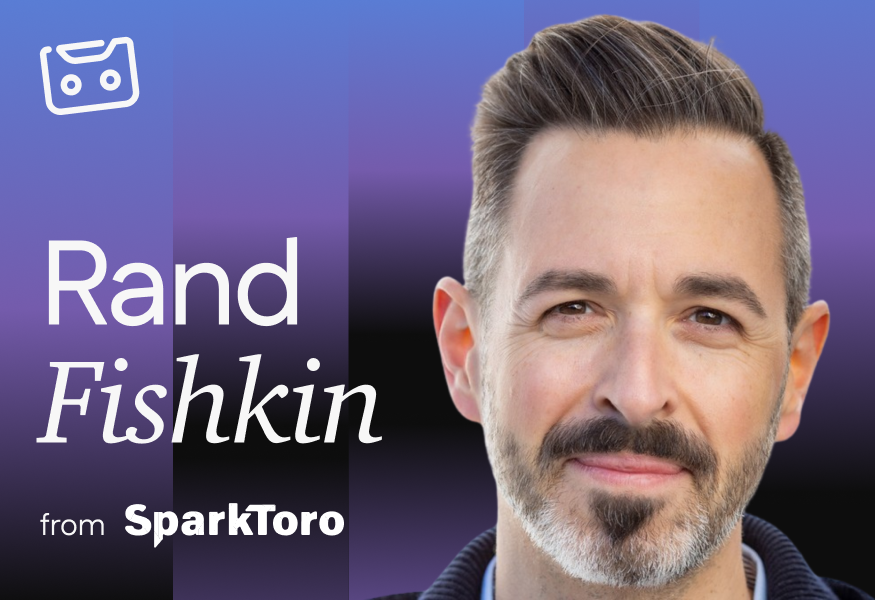When Andrew Wallace took up the role of Chief Product Officer at SmileBack — a customer service feedback system for managed service providers (MSPs)—there was a problem he needed to solve:
“How do our customers start seeing us as delivering new and ongoing value to them?”
Providing value to customers keeps them happy and breeds loyalty. This, in turn, increases retention, creates brand advocates and boosts your bottom line—which is especially important as 56% of customers say they’re willing to spend more on a brand they’re loyal to.
Adding new value to customers is critical for managing a thriving company. Or, in the case of an already successful SaaS provider like SmileBack, taking a company to the next level.
So it’s no surprise that when the question arose early in Tom's chat with Andrew, it became an ongoing theme. And the ideas, insights and processes Andrew shared can serve as inspiration for any product-led business looking to tackle a similar problem.
In this post, we’ll cover the key takeaways from Andrew’s episode of Maker Mixtapes that you can use to deliver value to your customers.
Don’t build technology for technology’s sake
A product can only work if there’s a need for it. It has to solve a problem that customers are looking to solve.
To meet customer needs, Andrew wanted to focus less on perfecting the code (which already worked well) and more on delivering value by listening to what customers wanted from the product.
He was able to do this in several ways:
- Collaborating with the customer support team and mining data gathered from customer conversations
- Identifying where the company was losing deals in the sales process due to lack of certain features
- Using Customer Satisfaction surveys (CSATs) and Net Promoter Score (NPS) surveys to gauge brand loyalty and relationships to a product or service
“[Customers] would say: ‘Hey, you know, feature X? If you could build feature X, I could use it this way. And it would really help my business in this way.’ They're basically writing user stories for us, which is incredible.”
Learning about your customers and understanding their pain points can guide every aspect of your business—from product and feature development to customer support and content.
- Make a habit of talking to customers: Reach out via surveys, email, phone, in-person meetings, and focus groups to find out what they most like about your product, what problems you’ve helped solve and what improvements can be made
- Analyse the conversation on social media channels: Look at what customers are saying about your brand, competitors, and industry on Twitter, LinkedIn, and communities
- Collaborate with other teams: Uncover customer needs from people on the front-line. Support, sales, and account teams talk to customers daily at every stage of the buying process. Look for patterns in the data they collect.
Let value lead your strategy
When you have this data, it's easy to see where value can be delivered to customers. The next stage is to formulate a clear strategy that maps out next steps.
Andrew calls this the “product by objectives canvas”, which is a product strategy on one slide that articulates key value propositions, along with features that support them, plus the outcomes. These are business objectives you would expect to achieve if you deliver those features in an effective way against those value propositions.
By setting out value propositions in this way, SmileBack was able to launch features based on feedback and insights from customers. Empathic design is also a critical element here, allowing them to figure out how to build products that could fulfil that proposition and deliver value.
The approach has led to churn rate dropping below 1.25% (the industry average is around 5%) and feature adoption increasing quickly and significantly amongst customers.
However, when building a product strategy, it’s important not to set it and leave it. The team at SmileBack continually tracks the performance and effectiveness of new features. Doing so can lead to some unexpected outcomes:
“We had a lot of people who were really vocal about [a feature] and really needed it. We assumed that meant the entire customer base needed it.
“The number one thing to deliver — that the customer base wanted most — has actually been the feature adopted least of the new things we’ve released this year.”
Always measure, tweak and measure again. Create a strategy that can evolve as new insights come to light.
Study your competition
Whatever stage of business you’re at, keeping a close eye on the competition and examining their strengths and weaknesses can help you to maintain a competitive advantage. It can also lead to some quick wins.
After SmileBack customers had expressed interest in a feature provided by the competition, Andrew’s team realised that the feature could be easily replicated and added to SmileBack:
“We had a few customers who had seen the competition and said, ‘Hey, is this something you guys would do? We'd be very interested in it.’ So we took a crack at it.”
By doing this, SmileBack gave leads another reason to choose them over the competition and existing customers a reason to remain loyal to the brand. They added value to their product by listening to customer needs.
What are your competitors doing well that you can implement into your business? What are they missing that you can exploit in your products, sales, and marketing?
Reach customers where they hang out
When you launch a new product or publish fresh content, a common goal is to spread your message far and wide to reach as many people as possible.
With billions of users combined, search engines and social platforms such as Facebook, Twitter, Instagram, and LinkedIn are obvious channels for this. But a channel’s popularity doesn’t necessarily make the best choice for your brand.
What’s more, having a presence on multiple platforms can mean spreading yourself too thin, resulting in less engaged channels becoming neglected and leaving a negative impression on people that stumble upon your outdated content.
A better approach is to find where your customers talk online and focus your efforts there. For SmileBack, they found that targeting customers through paid ads on Google was not part of their customers' journey.
Instead, they focus on LinkedIn, community spaces on Reddit, and dedicated forums where influencers within their space talk about their businesses and the software they’re using.
While the team creates thought leadership content on LinkedIn to build authority, benefiting from social media isn’t always about promoting:
“We're not that active in the sense of saying anything. We're just more active about being present, you know, contributing to a discussion.
"[Mostly we’re] just passively listening and understanding the target market insight.”
Explore different channels and cultivate those most aligned with your goals by following SmileBack’s lead:
- Maintain a presence: Show up on your chosen channels consistently to build trust
- Contribute where appropriate: Use your voice where relevant to showcase your expertise and thought leadership
- Listen to your audience: Monitor what your target market is saying about their problems, your brand, industry, and competition. Use that insight to inform your content strategy.
Opportunities can arise where you least expect them
Andrew began his career as a journalist before moving into product management and becoming Head of Product at Chef’s Table.
When Chef’s Table was bought out by HelloFresh, Andrew found himself in Berlin handing the transition. It was there, while having a drink with an old friend, he met SmileBack co-founder Ryan. 13 days later, he moved to Germany and became SmileBack’s Chief Product Officer.
There's no real business lesson here. But it shows that, if you keep honing your skills and maintain relationships, they can take you to great places. Even if serendipity does play a part.
Meet the makers
Maker Mixtapes is a podcast about the entrepreneurs, creators, and marketers building impressive things in their field. From content marketing to YouTube and growth, agency life to e-commerce and SaaS, this podcast aims to dissect and share lessons from their success.
Listen to Andrew and other episodes from the brightest minds in tech and business on Spotify or Apple Podcasts.












